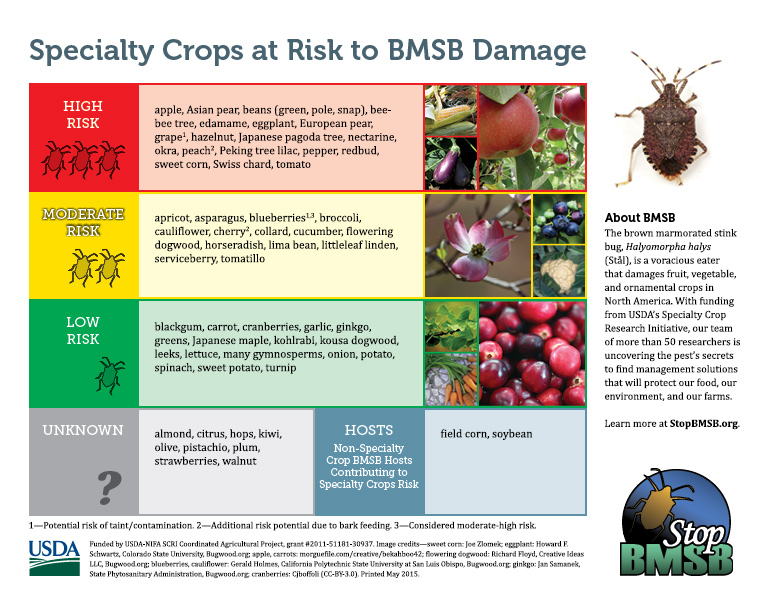Brown Marmorated Stink Bug
Since the 1990s, the brown marmorated stink bug (BMSB) has been gaining ground in the US as an invasive species. This invasive is suspected of coming into the US from China via cargo containers. A shield shaped bug about the size of a fingernail. Mostly brown, with off-white, gray, and black features, it appears to look similar to native stink bugs within the US.

The BMSB is known to be a voracious eater feeding off many fruit bearing trees, plus it is known to go after soybean and other vegetables. The StopBMSB.org site offers a short general list of plants targeted by the bug. A long list by plant name is provided here has 37 plants of agricultural importance to the US.

The economic value of agriculture which can be affected by the BMSB is estimated around $23 billion. A loss of $37 million to mid-Atlantic apple industry. Insecticides are reported as having a “short-lived effect” as evidence of the BMSB building a resistance. There are a few EPA approved insecticides (such as Bifenture 10DF, Bifenture EC, and Brigade WSB) for specific crops, in specific region, and to be used under specific restrictions as these are highly toxic to fish, aquatic invertebrates and bees. A cure which is more deadly than the disease if misapplied. Studies by Rutger University involve pheromone attract-to-kill method as a safer means of control. The pests are baited to a kill site where use of strong insecticides may be used more safely for the environment.
A scelionid wasp (name: Trissolcus japonicus) is a known predator of the stink bug native to China, and it is under study as a potential natural solution to control the BMSB population. The praying mantis is a biological control potential, but neither insect targets only the BMSB.
The orb weaver spider is another known pest predator that eats the BMSB. There are in North America an estimated 150 different orb weaver species.
Radishes are a natural means to repel the BMSB. While this does not kill the bug, it does provide a method to deter them from areas treated.
Research into combating the BMSB is ongoing, but each of us can do a small part to help. No one likes these pests, and they have a habit of invading a home through a very small crack. Trying to kill them stinks - literally. A simple at-home-method without the stink is using a simple, empty, and dry water bottle. Tap underneath them where they are perch, and they tend to just drop in. Cap the lid, and hide the bottle until you find the next one.
